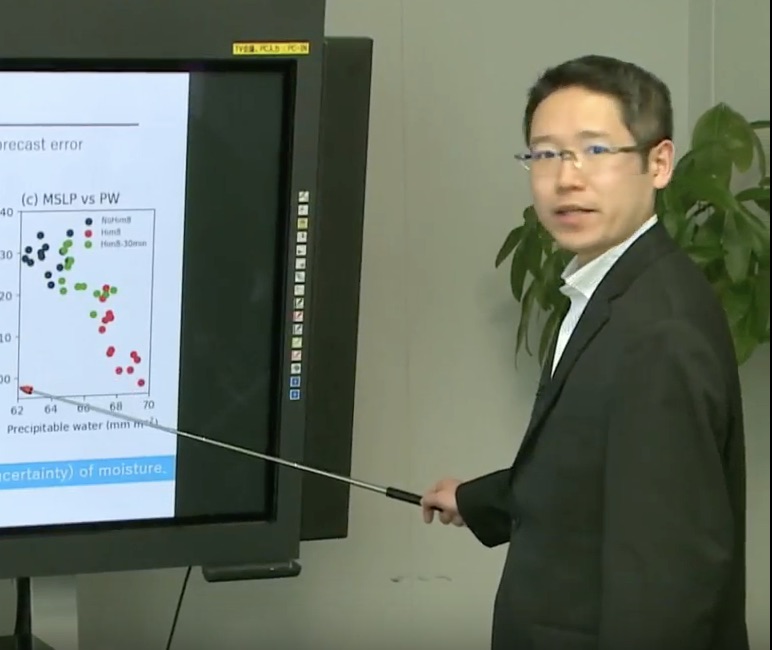 In this video from the HPC User Forum in Tucson, Miyoshi Takemasa from RIKEN presents: Big Data Assimilation Revolutionizing Weather Prediction.
In this video from the HPC User Forum in Tucson, Miyoshi Takemasa from RIKEN presents: Big Data Assimilation Revolutionizing Weather Prediction.
A new project harnessing data from a Japanese satellite called Himawari-8 could improve weather forecasting and allow officials to issue life-saving warnings before natural disasters, researchers say. For the first time, the project uses “infrared radiation luminance data” to model weather patterns in areas under heavy cloud cover, which would usually stymie such modeling. The breakthrough is the result of pairing data collected by Japan’s Himawari-8 weather satellite with a program run on a supercomputer at the RIKEN science institute.
“Himawari-8 is sending types of big data that were not available before,” said Takemasa Miyoshi, the team’s leader at Riken. “We are now able to build a system that uses this data to improve the way we predict weather.”
The modeling system allows meteorologists to gauge the height of clouds, vital information for estimating other factors including wind, temperature, and the volume of moisture in the atmosphere. The team, whose research is being published in the Monthly Weather Review and the Journal of Geophysical Research: Atmospheres, said the program could help improve forecasting during extreme weather.
Dr. Miyoshi Takemasa is Team Leader for the Data Assimilation Research Team at the RIKEN Center for Computational Science. Upon completing the B.S. degree in theoretical physics from the Kyoto University in 2000, Dr. Takemasa Miyoshi started his professional career as a civil servant at the Japanese Meteorological Agency (JMA). After two years of administrative experience, Dr. Miyoshi started his scientific career on numerical weather prediction and developed the three-dimensional variational data assimilation system from scratch for the JMA nonhydrostatic mesoscale model. In 2003, Dr. Miyoshi received a Japanese government fellowship to study at the University of Maryland (UMD) and completed both M.S. and Ph.D. degrees in meteorology on ensemble data assimilation within two years.
In 2005, Dr. Miyoshi moved back to JMA and was in charge of developing the JMA’s next generation ensemble data assimilation systems. During the four years at JMA, Dr. Miyoshi came to be recognized as a leading scientist in data assimilation; he was asked to give invited talks at several international conferences and to be a member of the organizing committee of the World Meteorological Organization’s data assimilation symposium in Melbourne, the most prestigious conference in the field. In 2009, Dr. Miyoshi moved to UMD as a Research Assistant Professor, and got deeply involved in education as a tenure-track Assistant Professor in 2011. In 2012, Dr. Miyoshi started leading the Data Assimilation Research Team in RIKEN Advanced Institute for Computational Science, and has been working towards his goals of advancing the science of data assimilation as well as a deep commitment to education.
Dr. Miyoshi’s scientific achievements include 96 peer-reviewed publications and more than 100 invited conference presentations including the Core Science Keynote at the American Meteorological Society Annual Meeting (2015). Dr. Miyoshi has been recognized by several prestigious awards such as the Yamamoto-Syono Award by the Meteorological Society of Japan (2008), the Young Scientists’ Prize by the Minister of Education, Culture, Sports, Science and Technology (2014), the Japan Geosciences Union Nishida Prize (2015), and the Meteorological Society of Japan Award (2016) – the highest award of the society.
See more talks at the HPC User Forum Video Gallery
Check out our insideHPC Events Calendar




